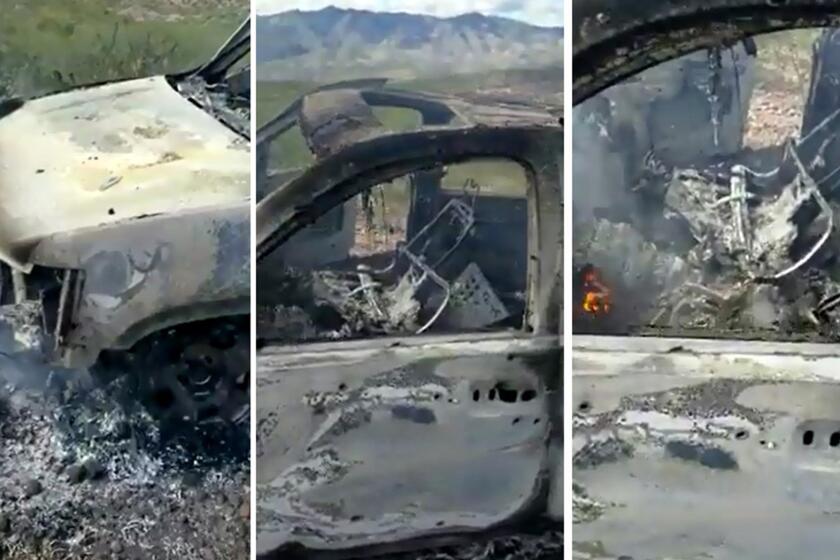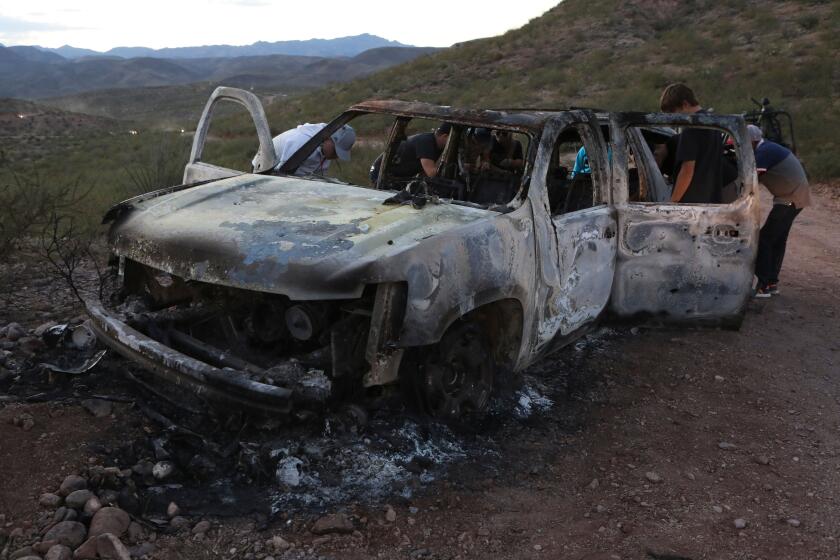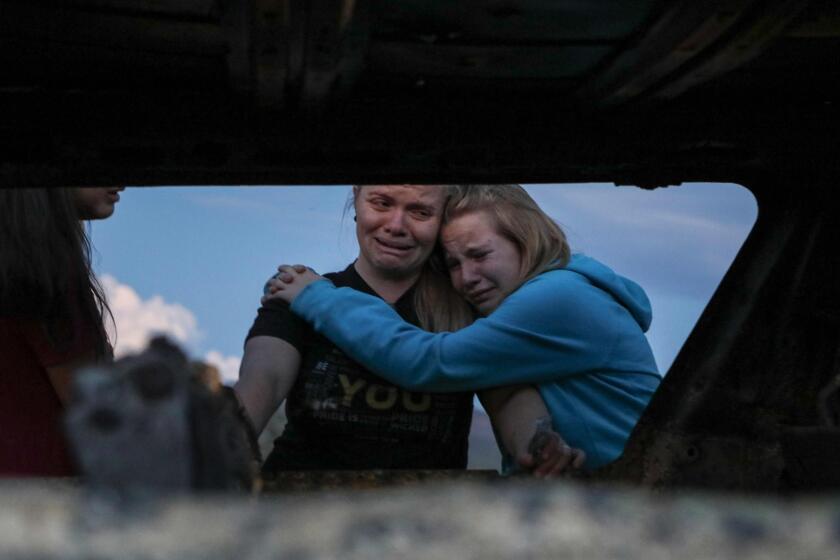For Mexico ambush victims, there was no safety in numbers
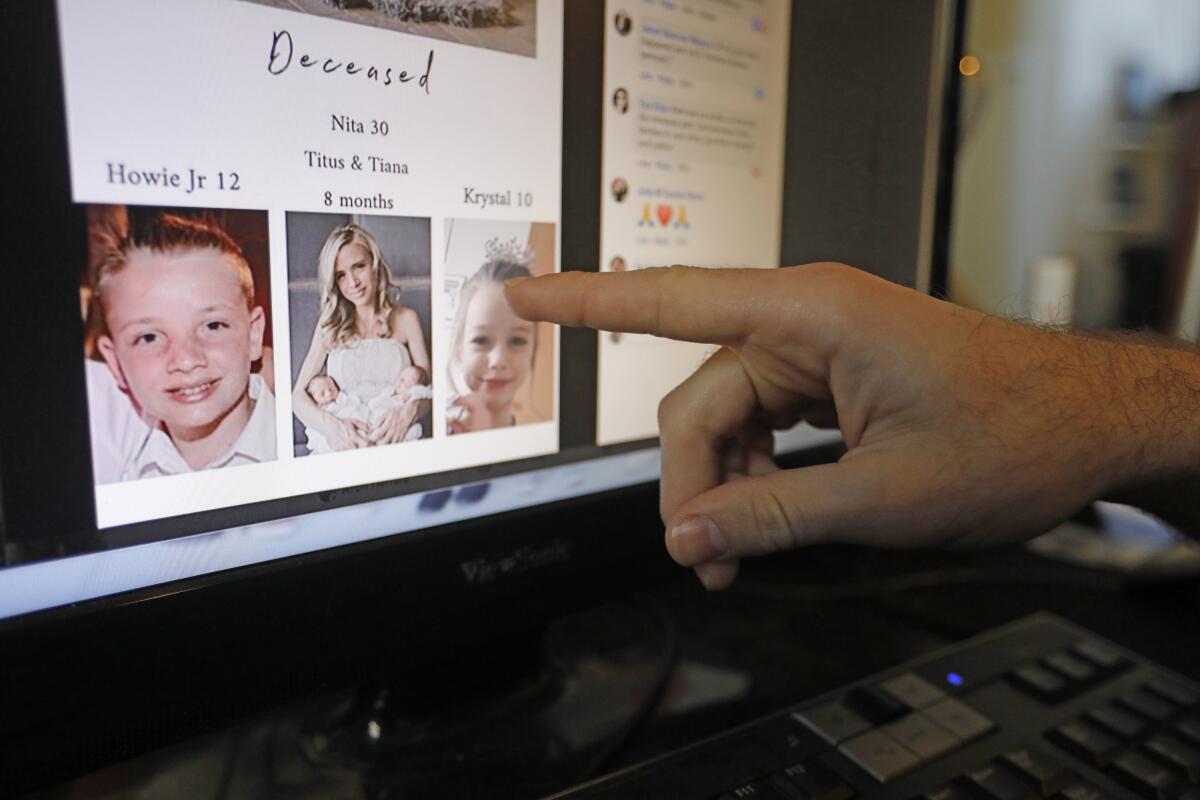
- Share via
LA MORA, Mexico — Over the last few months, members of the close-knit Mormon community in this mountain hamlet began taking new precautions.
Tensions were rising between the criminal group that controlled La Mora, in the northern Mexican state of Sonora, and another cartel that controlled territory in neighboring Chihuahua state.
After two local men went missing while crossing a stretch of desert not far from here, the Mormons — dual U.S.-Mexican citizens who have lived and farmed here for decades — decided that when they traveled, it would be in large caravans only. There was safety in numbers, they believed.
They were wrong.
On Monday, three women from the community set out with their children in three sport utility vehicles, heading first for the Arizona border and then to visit another Mormon community several hours away.
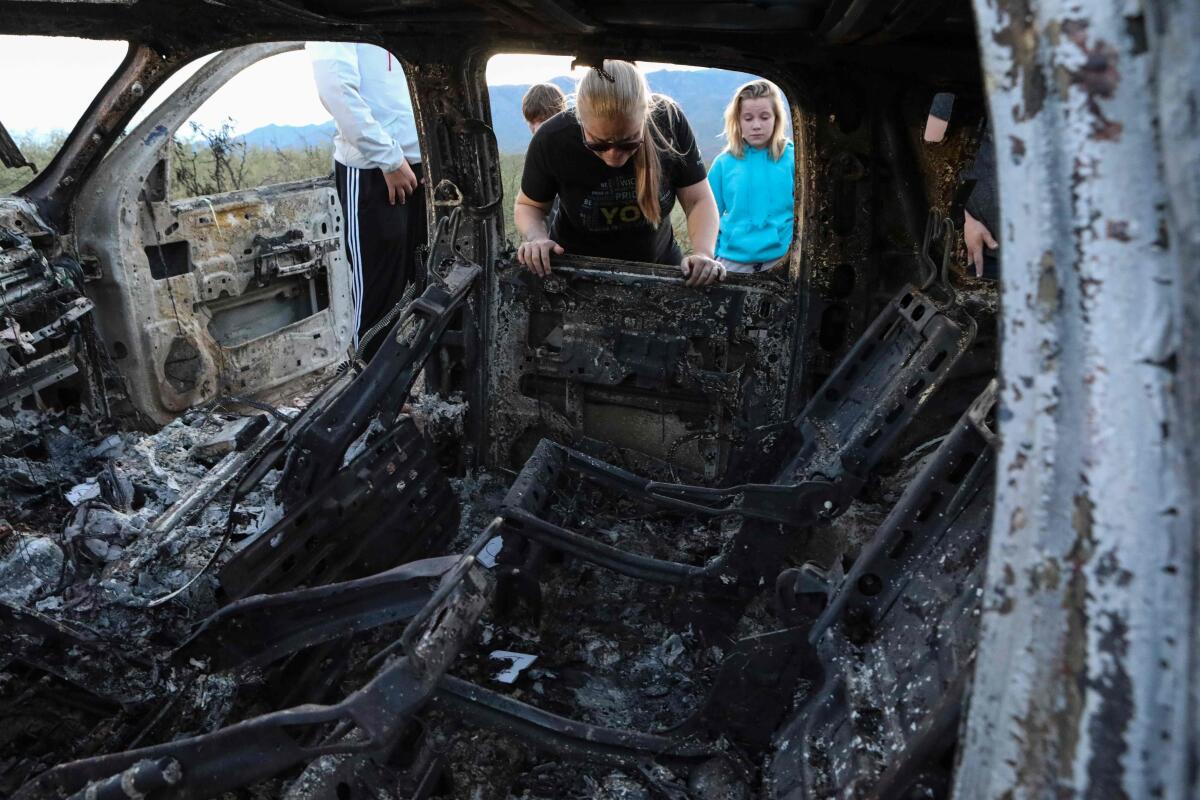
Not long after they departed, they were ambushed.
All three women and six of their children were killed when unknown assailants opened fire on the vehicles.
Eight other children, some not old enough to walk, hid in the brush for hours after the attack, with two trekking miles in search of help.
Top Mexican officials have speculated that the group may have been attacked by accident, with Security Secretary Alfonso Durazo saying one cartel may have mistaken the convoy of SUVs for another criminal group.
The victims, three women and six children, were members of a fundamentalist Mormon sect that has been based for decades in a remote stretch of Mexico southwest of El Paso.
But relatives of the victims don’t buy that story. They said the gunmen who killed their family members kept shooting even after one woman stepped from her car to show that there were women and children in the vehicles.
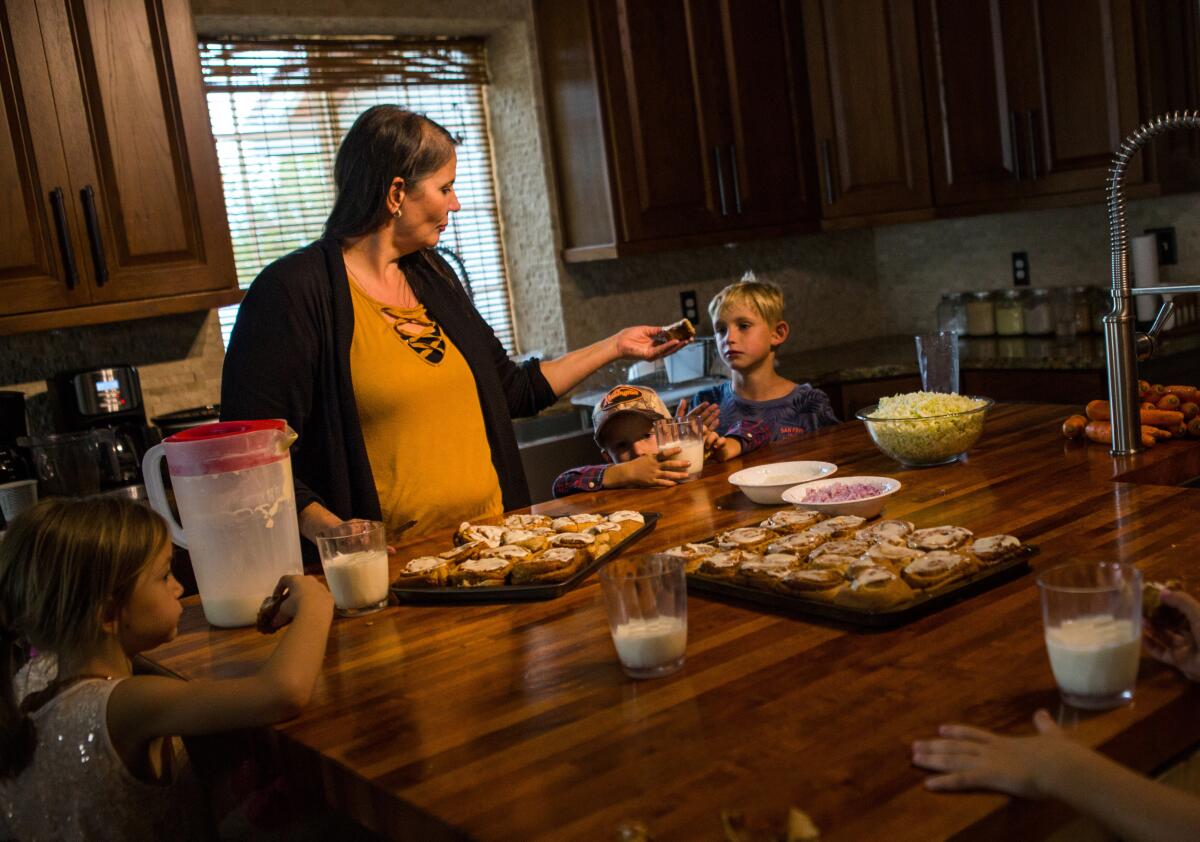
“This was deliberate and intentional,” said Loretta Miller, 53, whose daughter-in-law, Rhonita Miller, was killed along with her four children.
“We were the targets,” she said in an interview at her home here on Wednesday. “We just don’t know why.”
The answer may lie in the Mormon community’s cordial relationship with the Salazar criminal group that controls illicit activity in the region. The group is aligned with the powerful Sinaloa cartel — once headed by Joaquin “El Chapo” Guzman — and is mortal enemies with the Linea, a faction of the Juarez cartel of Chihuahua.
“They run everything here,” Miller said.
And largely out of fear, the Mormon community, which runs large pecan and pomegranate farms in this fertile river valley, has not challenged them.
Miller said the cartel frequently set up roadblocks to track who was coming in and out of the area and last year told the Mormons — who settled here decades ago after breaking off with the Church of Jesus Christ of Latter-day Saints — that they had to buy gasoline from the cartel and couldn’t purchase it anywhere else.
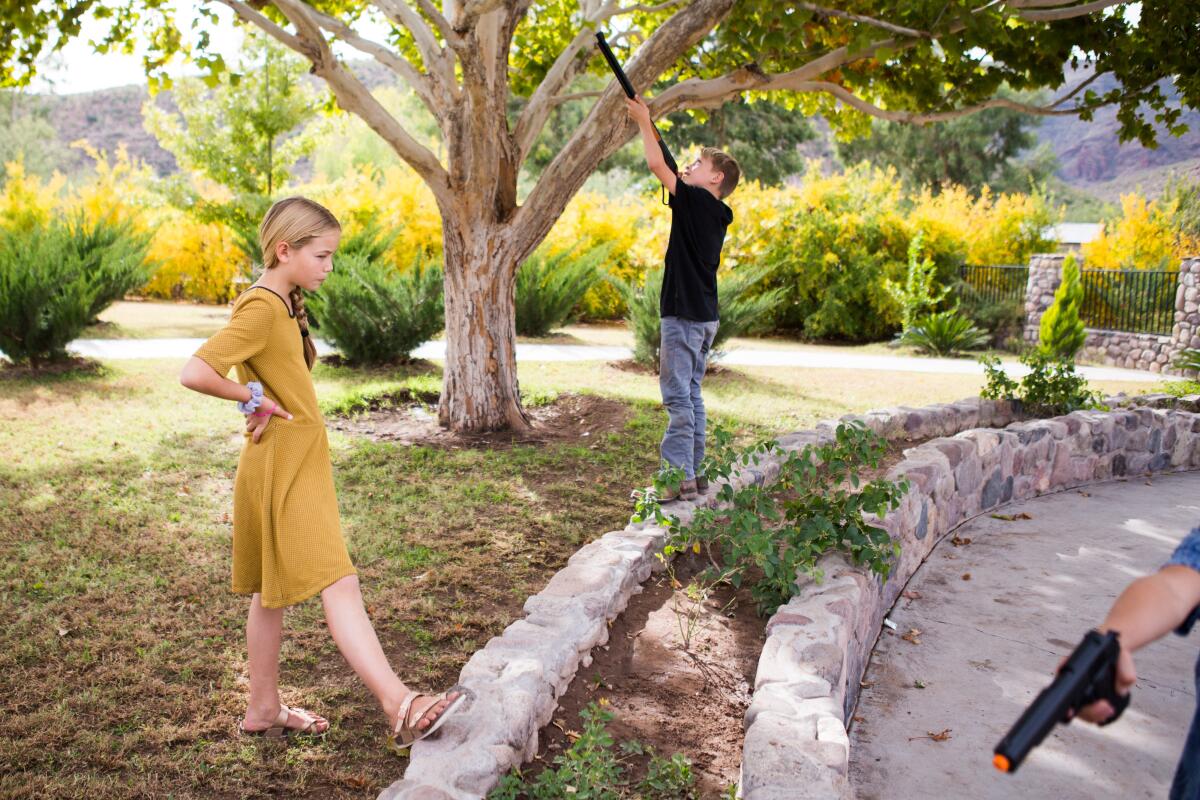
The Mormons obeyed. In exchange, cartel members warned them to stay home when they thought there might be violence.
Although nobody in the community knows for sure the meaning behind Monday’s attack, some here have speculated that the Juarez cartel wanted to send a message that it controlled the road into Chihuahua state that the caravan of mothers and children was traversing.
A suspect is arrested in Agua Prieta, near the border with Arizona, in connection with the deaths of nine U.S. citizens slaughtered by cartel gunmen.
The attack shocked Mexico, which is in the grip of an unprecedented rise in violence, and raised alarm in the United States, where President Trump tweeted about it, urging Mexico to go to “war” with the country’s drug cartels.
As soldiers in camouflage tanks traversed the highways across the region, with others circling La Mora to provide protection, residents here gave interviews to international news outlets while trying to comfort their loved ones and prepare for funerals scheduled for Thursday.
Among the children who survived, five were wounded and were flown to the U.S. for medical care.
After the attack, 13-year-old Devin Blake Langford, one of the few uninjured young people, quickly took charge, eventually walking about 14 miles back to La Mora for help, said Kendra Miller, a relative.
“After witnessing his mother and brothers being shot dead, Devin hid his six other siblings in the bushes and covered them with branches to keep them safe while he went for help,” according to the relative’s account. “When he took too long to return, his 9-year-old sister left the remaining five to try again.”
That girl, Mckenzie Rayne Langford, walked for hours in the dark before she was found several hours after the other children were rescued.
Altogether, the youngsters were on their own from about 11 a.m. until about 7:30 p.m., when they were rescued. Relatives from La Mora tried to reach them before that but were turned back by gunfire from the cartel gunmen.
In recordings of calls between the rescuers, they can be heard debating whether to risk more lives or wait an hour or two for Mexican army troops to arrive. It was an agonizing decision.
What they saw when they found the children was terrifying.
Cody Greyson Langford, 8, had been shot in the jaw and bled profusely. Another girl had been shot in the foot and the back.
The Mormon presence in the region dates to 1886, when the Church of Jesus Christ of Latter-day Saints began cracking down on polygamists, and a sect that embraced polygamy fled the U.S. and purchased 50,000 acres of land in the Mexican state of Chihuahua.
The deadly attack Monday on U.S.-Mexican citizens in northern Mexico has brought renewed attention to the history of fundamentalist Mormon communities that settled in northern Mexico in the 19th century.
In 1944, a member of that community, Dayer LeBaron, acting on what he said was a message from God, moved about 35 miles south and established his own homestead, known as Colonia LeBaron.
The victims were all apparently members of the LeBaron extended family. La Mora, where they lived, is about 70 miles south of the Arizona border.
The LeBaron sect, whose members have now mostly eschewed polygamy, has a turbulent history. In 1993, three people who were part of an offshoot of the group were convicted in Texas of killing three former members and an 8-year-old child.
More recently, the group has clashed with locals over water rights and has also been victim to organized crime.
In 2009, assailants captured and killed two members of the group, including Benjamin LeBaron, a great-grandson of its founder.
LeBaron, a U.S. citizen, had led anti-violence protests after his teenage brother was kidnapped and held for a $1-million ransom. The family refused to pay the ransom and the teenager was eventually released.
Another LeBaron brother, Julian, later became an activist for peace.
The Associated Press contributed to this report.
More to Read
Sign up for Essential California
The most important California stories and recommendations in your inbox every morning.
You may occasionally receive promotional content from the Los Angeles Times.
